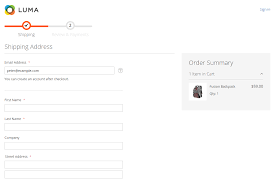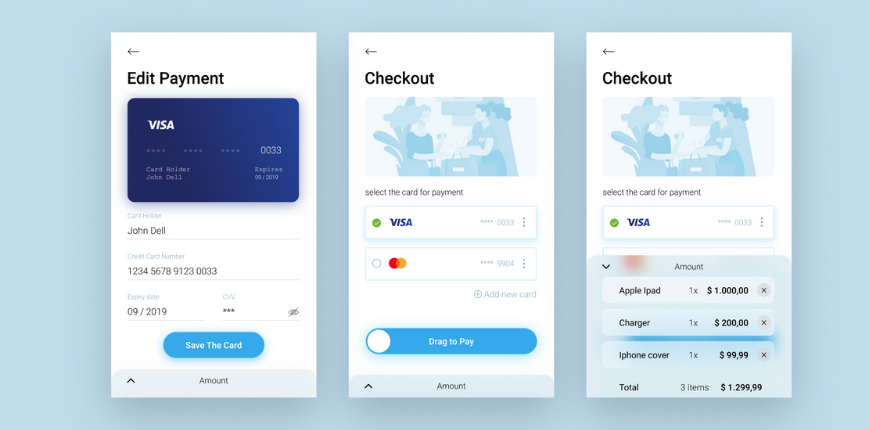What is one-step checkout?
One-step checkout, also referred to as a one-page checkout, is an approach to designing eCommerce websites where the entire checkout process is condensed into a single form displayed on a single page. The primary objective of one-step checkout, in contrast to multi-step checkout systems, is to guide the customer through the purchasing process with maximum simplicity and speed.

In a one-step checkout design, customers can review and input all the necessary information for completing a purchase, such as shipping details, billing information, payment method, and order confirmation, without navigating through multiple pages or steps. This streamlined approach aims to reduce friction and enhance the overall shopping experience by minimizing the number of clicks and data entry required from the customer.
The advantage of one-step checkout extension
The key benefits of one-step checkout include a faster and more efficient purchasing process, a lower likelihood of cart abandonment, and increased conversion rates. By providing a seamless and user-friendly checkout experience, eCommerce businesses can improve customer satisfaction and ultimately drive more successful transactions.
Certainly, one of the advantages of implementing a one-step checkout system is the speed and efficiency it offers to visitors. With this approach, customers do not have to navigate through multiple pages during the checkout process. Instead, they can complete the entire payment process in a single step, significantly reducing the time and effort required to make a purchase.
This streamlined experience minimizes the need for customers to click through various stages, such as shipping details, billing information, payment method selection, and order confirmation, which are often spread across multiple pages in a traditional multi-step checkout. As a result, the one-step checkout approach simplifies and expedites the checkout process, making it more convenient and user-friendly.
The quick and hassle-free nature of one-step checkout can contribute to a more positive shopping experience for customers, reduce the risk of cart abandonment, and potentially increase conversion rates. Visitors are more likely to complete their purchases when the payment process is straightforward and can be completed with just a single action.
Let try to use a demo of one-step extension by Bss to experience this add-on: https://bsscommerce.com/magento-2-one-step-checkout-extension.html
When is one-step checkout effective?
One-step checkout can indeed be particularly effective in specific scenarios within the realm of eCommerce:

Low-Ticket Items: One-step checkout is well-suited for low-cost items because it aligns with the need for quick, hassle-free purchases. Customers are less likely to spend extra time on a lengthy checkout process when buying inexpensive products.
Flash Sales: During flash sales or limited-time offers, speed is crucial. One-step checkout allows customers to complete their purchases swiftly, which is essential in such time-sensitive situations.
Repeat Purchases: For repeat customers, one-step checkout can be highly convenient. If autofill settings are enabled, the entire purchasing process can be reduced to a single action, such as clicking a "Buy Now" button. This saves time and effort for customers who have previously entered their information.
Mobile Shopping: Mobile shoppers often prefer streamlined processes due to the limitations of smaller screens. One-step checkout caters to this need for simplicity and can enhance the mobile shopping experience.
However, there are situations where one-step checkout may be less effective:
High-Ticket Items: When customers are making substantial, expensive purchases, they may prefer a more comprehensive and considered checkout process. A one-step checkout for high-ticket items can seem rushed and may not align with the careful consideration that typically goes into such purchases.
Overwhelming Form Fields: Combining multiple pages of form fields into one long form can overwhelm some visitors, leading to a potential drop in conversion rates. Visitors may find it daunting to complete a lengthy form, especially if they need to provide extensive information.
One-step checkout optimization
The primary goal of any checkout process in eCommerce is to minimize cart abandonment rates and maximize completed purchases. Since a significant portion of cart abandonments occurs during the checkout page stage, eCommerce websites must strive to achieve the best possible usability to secure more successful transactions.
Smart eCommerce sites adopt a proactive approach by continuously conducting A/B testing and optimizing various elements of their checkout process. These optimizations can encompass payment layout, overall design, form field messages, calls to action, and more. By systematically experimenting with these elements and tracking user behavior, eCommerce businesses can identify the most effective variations that lead to higher conversion rates.
Machine learning technology is increasingly being employed to automatically implement the best-performing variations. By leveraging machine learning algorithms, eCommerce platforms can dynamically adjust and fine-tune the checkout process based on real-time data and user interactions. This ensures that the checkout experience is continually optimized to reduce cart abandonments and encourage more successful transactions.
In essence, maintaining an optimized checkout process is crucial for minimizing cart abandonment rates and boosting conversions at this pivotal stage of the purchase journey. By embracing a data-driven and iterative approach to design and employing machine learning techniques, eCommerce businesses can enhance the user experience, reduce friction, and ultimately drive more sales.








